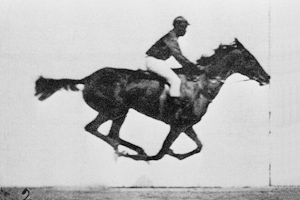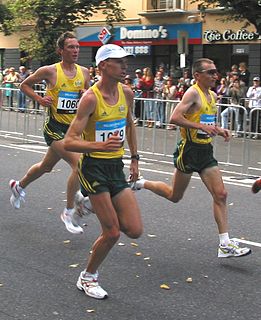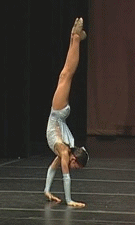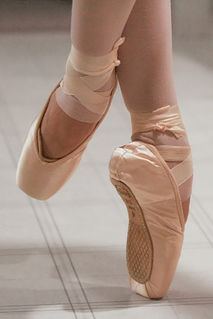 W
WTerrestrial locomotion has evolved as animals adapted from aquatic to terrestrial environments. Locomotion on land raises different problems than that in water, with reduced friction being replaced by the increased effects of gravity.
 W
WAkidolestes is an extinct genus of spalacotheriid mammal.
 W
WBipedalism is a form of terrestrial locomotion where an organism moves by means of its two rear limbs or legs. An animal or machine that usually moves in a bipedal manner is known as a biped, meaning "two feet". Types of bipedal movement include walking, running and hopping.
 W
WComparative foot morphology involves comparing the form of distal limb structures of a variety of terrestrial vertebrates. Understanding the role that the foot plays for each type of organism must take account of the differences in body type, foot shape, arrangement of structures, loading conditions and other variables. However, similarities also exist among the feet of many different terrestrial vertebrates. The paw of the dog, the hoof of the horse, the manus (foot) and pes (foot) of the elephant, and the foot of the human all share some common features of structure, organization and function. Their foot structures function as the load-transmission platform which is essential to balance, standing and types of locomotion.
 W
WThe effect of gait parameters on energetic cost is a relationship that describes how changes in step length, cadence, step width, and step variability influence the mechanical work and metabolic cost involved in gait. The source of this relationship stems from the deviation of these gait parameters from metabolically optimal values, with the deviations due to environmental, pathological, and other factors.
 W
WGait is the pattern of movement of the limbs of animals, including humans, during locomotion over a solid substrate. Most animals use a variety of gaits, selecting gait based on speed, terrain, the need to maneuver, and energetic efficiency. Different animal species may use different gaits due to differences in anatomy that prevent use of certain gaits, or simply due to evolved innate preferences as a result of habitat differences. While various gaits are given specific names, the complexity of biological systems and interacting with the environment make these distinctions "fuzzy" at best. Gaits are typically classified according to footfall patterns, but recent studies often prefer definitions based on mechanics. The term typically does not refer to limb-based propulsion through fluid mediums such as water or air, but rather to propulsion across a solid substrate by generating reactive forces against it.
 W
WA gait is a pattern of limb movements made during locomotion. Human gaits are the various ways in which a human can move, either naturally or as a result of specialized training. Human gait is defined as bipedal, biphasic forward propulsion of the center of gravity of the human body, in which there are alternate sinuous movements of different segments of the body with least expenditure of energy. Different gait patterns are characterized by differences in limb-movement patterns, overall velocity, forces, kinetic and potential energy cycles, and changes in the contact with the ground.
 W
WGait analysis is the systematic study of animal locomotion, more specifically the study of human motion, using the eye and the brain of observers, augmented by instrumentation for measuring body movements, body mechanics, and the activity of the muscles. Gait analysis is used to assess and treat individuals with conditions affecting their ability to walk. It is also commonly used in sports biomechanics to help athletes run more efficiently and to identify posture-related or movement-related problems in people with injuries.
 W
WGait Analysis: Normal and Pathological Function is a textbook that focuses on human gait analysis and is written by Jacquelin Perry and Judith M. Burnfield. It is an updated and revised version of Gait Analysis: Normal and Pathological Function (1992), a text many consider to be a staple for the curriculum of education of gait analysis. It is frequently cited in academic publications as well as journals for orthopedics, physical therapy and athletic training.
 W
WGait deviations are nominally referred to as any variation of standard human gait, typically manifesting as a coping mechanism in response to an anatomical impairment. Lower-limb amputees are unable to maintain the characteristic walking patterns of an able-bodied individual due to the removal of some portion of the impaired leg. Without the anatomical structure and neuromechanical control of the removed leg segment, amputees must use alternative compensatory strategies to walk efficiently. Prosthetic limbs provide support to the user and more advanced models attempt to mimic the function of the missing anatomy, including biomechanically controlled ankle and knee joints. However, amputees still display quantifiable differences in many measures of ambulation when compared to able-bodied individuals. Several common observations are whole-body movements, slower and wider steps, shorter strides, and increased sway.
 W
WHand walking is an unusual form of human locomotion in which a person travels in a vertically inverted orientation with all body weight resting on the hands. It can be executed with legs fully extended or with variations such as stag, straddle or front splits. Hand walking is performed in various athletic activities, including acro dance and circus acrobatics.
 W
WJumping or leaping is a form of locomotion or movement in which an organism or non-living mechanical system propels itself through the air along a ballistic trajectory. Jumping can be distinguished from running, galloping and other gaits where the entire body is temporarily airborne, by the relatively long duration of the aerial phase and high angle of initial launch.
 W
WLead refers to which set of legs, left or right, leads or advances forward to a greater extent when a quadruped animal is cantering, galloping, or leaping. The feet on the leading side touch the ground forward of its partner. On the "left lead", the animal's left legs lead. The choice of lead is of special interest in horse riding.
 W
WLimitations of animal running speed provides an overview of how various factors determine the maximum running speed. Some terrestrial animals are built for achieving extremely high speeds, such as the cheetah, pronghorn, race horse and greyhound, while humans can train to achieve high sprint speeds. There is no single determinant of maximum running speed: however, certain factors stand out against others and have been investigated in both animals and humans. These factors include: Muscle moment arms, foot morphology, muscle architecture, and muscle fiber type. Each factor contributes to the ground reaction force (GRF) and foot contact time of which the changes to increase maximal speed are not well understood across all species.
 W
WPetrolacosaurus is an extinct genus of diapsid reptile from the late Carboniferous period. It was a small, 40-centimetre (16 in) long reptile, and the earliest known reptile with two temporal fenestrae. This means that it was at the base of Diapsida, the largest and most successful radiation of reptiles that would eventually include all modern reptile groups, as well as dinosaurs and other famous extinct reptiles such as plesiosaurs, ichthyosaurs, and pterosaurs. However, Petrolacosaurus itself was part of Araeoscelida, a short-lived early branch of the diapsid family tree which went extinct in the mid-Permian.
 W
WQuadrupedalism is a form of terrestrial locomotion where a tetrapod animal uses all four limbs (legs) to weightbear, walk and run. An animal or machine that usually maintains a four-legged posture and moves using all four limbs are said to be a quadruped. The majority of quadrupeds are terrestrial vertebrates, including mammals and reptiles, though some are largely aquatic such as turtles, amphibians and pinnipeds.
 W
WRectilinear locomotion or rectilinear progression is a mode of locomotion most often associated with snakes. In particular, it is associated with heavy-bodied species such as terrestrial pythons and boas; however, most snakes are capable of it. It is one of at least five forms of locomotion used by snakes, the others being lateral undulation, sidewinding, concertina movement, and slide-pushing. Unlike all other modes of snake locomotion, which include the snake bending its body, the snake flexes its body only when turning in rectilinear locomotion.
 W
WSeveral organisms are capable of rolling locomotion. However, true wheels and propellers—despite their utility in human vehicles—do not appear to play a significant role in the movement of living things. Biologists have expounded on the reasons for this apparent absence of biological wheels, and wheeled creatures have appeared often in speculative fiction.
 W
WRunning is a method of terrestrial locomotion allowing humans and other animals to move rapidly on foot. Running is a type of gait characterized by an aerial phase in which all feet are above the ground. This is in contrast to walking, where one foot is always in contact with the ground, the legs are kept mostly straight and the center of gravity vaults over the stance leg or legs in an inverted pendulum fashion. A feature of a running body from the viewpoint of spring-mass mechanics is that changes in kinetic and potential energy within a stride occur simultaneously, with energy storage accomplished by springy tendons and passive muscle elasticity. The term running can refer to any of a variety of speeds ranging from jogging to sprinting.
 W
WSidewinding is a type of locomotion unique to caenophidian snakes, used to move across loose or slippery substrates. It is most often used by the Saharan horned viper, Cerastes cerastes, the Mojave sidewinder rattlesnake, Crotalus cerastes, and the Namib desert sidewinding adder, Bitis peringueyi, to move across loose desert sands, and it is also used by Homalopsine snakes in Southeast Asia to move across tidal mud flats. Any number of caenophidian snakes can be induced to sidewind on smooth surfaces, though their difficulty in getting them to do so and their proficiency at it vary greatly.
 W
WStotting is a behavior of quadrupeds, particularly gazelles, in which they spring into the air, lifting all four feet off the ground simultaneously. Usually, the legs are held in a relatively stiff position. Many explanations of stotting have been proposed; there is evidence that at least in some cases it is an honest signal to predators that the stotting animal would be difficult to catch.
 W
WTiptoe describes the human body posture and locomotion of removing the heel(s) of one or both feet from the ground. The term is mostly used colloquially when the weight is placed on the balls of the feet rather than literally on the tips of the toes; literal tip-toeing is difficult but possible, as in the pointe technique of ballet. In running, landing on the ball of the foot is known as forefoot strike.
 W
WTripedalism is locomotion by the use of three legs. It has been conjectured that parrots (Psittaciformes) display tripedalism during climbing gaits, though this has not yet been documented thoroughly in scientific literature. Tripedal gaits were also observed by K. Hunt in primates. This is usually observed when the animal is using one limb to grasp a carried object and is thus a non-standard gait. Apart from the parrot conjecture, there are no known species where three legs are standard, although the movement of some macropods such as kangaroos, which can alternate between resting their weight on their muscular tails and their two hind legs and hop on all three, may be an example of tripedal locomotion in animals. There are also the tripod fish. Several species of these fish rest on the ocean bottom on two rays from its two pelvic fins and one ray from its caudal fin.
 W
WA walking fish, or ambulatory fish, is a fish that is able to travel over land for extended periods of time. Some other modes of non-standard fish locomotion include "walking" along the sea floor, for example, in handfish or frogfish.